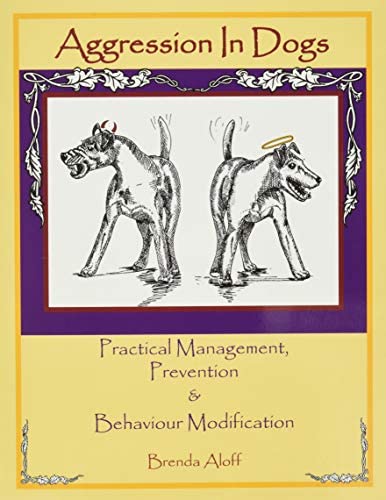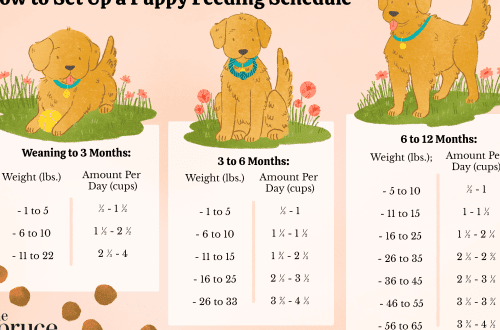
Aggression in Dogs: Behavior Correction
Is it possible to train a dog not to show aggressive behavior? Yes. Aggression in pets towards the owner or other dogs is a serious behavioral disorder that can and should be corrected with the support of a professional canine trainer. Of course, you can teach the animal basic techniques at home, but first you need to determine the cause of aggressive behavior, and then move on to correcting it.
Contents
Aggression in dogs: warning signs
Aggression is a term that is used to define a variety of dog behaviors. As a rule, aggressive behavior begins with a warning, but can eventually lead to an attack, so training the animal is extremely important.
Here are a few ways a dog expresses aggressive behavior:
- Growl.
- Rigid and/or immovable stance.
- Grin.
- A growl with a grin.
- Threatening or guttural barking.
- Assault or attack on a person.
- Tooth touch / light bite without pressure.
- Capture of body parts or bite without marks.
- A bite with a wound or bruise.
- Quick multiple bites.
Causes of Aggressive Dog Behavior
Pets can be aggressive for many reasons. The American Society for the Prevention of Cruelty to Animals states that dog behavior generally falls into one of the following categories of aggression:
- Territorial.
- Dominant.
- Protective.
- Scare
- Lack of socialization.
- Defensive.
- Painful.
Aggression manifests itself for various reasons, but often depends on environmental conditions. If you adopted a dog from a shelter, it may have been abused in the past and certain pathogens can trigger aggressive behavior. Therefore, it is extremely important to tell your dog how much you love him and create a safe environment for him.
If a pet behaves unkindly after an injury, pain is most likely the cause, but when it subsides, aggression usually disappears. However, remember that when you try to relieve your dog, the pain may get worse and cause even more discomfort, and then he may lash out at you. If this happens, call your veterinarian immediately and ask when and how you can bring the animal to the clinic.
Territorial aggression can manifest in a dog when a person or animal approaches an object that it cherishes, such as a toy or a beloved owner. In this case, it is necessary to teach her to respect the boundaries and wean from overprotection. This case is much more ambiguous, since this type of aggression is genetically incorporated, but sometimes it can be corrected. If your dog is used to the fact that all the toys in the house belong exclusively to him, then a new pet may break this idea and force him to defend his territory. In this case, gradually accustom the animals to changes so that the obstinate pet will eventually get used to the new circumstances.
Once you have identified the cause of the aggressive behavior, you can then tailor the perfect training program. You can also avoid negative or provoking factors or change the environment.
Aggressive dog training
The first step to training an aggressive dog is to determine the cause of the behavior. Is your dog aggressive towards a certain family member or your friend, towards strangers or other animals? Also, as mentioned above, it is necessary to determine what in the environment of the pet provokes an attack of aggression.
Once you determine the cause of the aggression and its direction, it’s time to take the dog for training to a canine trainer. If you are unsure of a trainer, check with your veterinarian. According to the American Society for the Prevention of Cruelty to Animals, “Some aggressive dogs behave this way because of disease or complications.” Before you start training your dog, take him to the veterinarian and check his health. During the examination, the doctor will determine any health problems that contribute to the development of aggression in the behavior of the animal.
Under no circumstances ignore signs of aggression
This is good advice for many reasons. First, aggression is an undesirable personality trait that can lead to injury to another person or the dog itself. If you notice signs of aggressive behavior in an unfamiliar dog, leave it alone. If you notice this in your dog, be sure to find out the reason for this behavior so that you can take steps to correct it.
Ignoring aggression is a threat to your safety. Thinking of yourself as the leader of the pack, your dog has a genetically engineered defense mechanism to keep you safe from any threats. If you notice any signs of aggression in your normally docile dog, take a good look around. Hearing and sense of smell in animals is stronger than in humans, so they can recognize the threat much earlier. If the dog senses an intruder in your home or a wild animal in the area, signs of aggression could be a warning of danger.
Finally, don’t punish your dog for aggressive behavior. She does not understand punishment, so she can get even more angry and become even more aggressive. The best way to wean a dog from aggression is to reward good behavior. Sometimes your dog needs to be reminded that you are the head of the family, but in the end it will respond best to reward-based training.
Like children, dogs need to create conditions for good behavior. As a rule, persistent aggressive behavior indicates the presence of a problem that needs to be identified in order to change the environment for the better. Once you determine the cause, you can begin to work with the pet, and the veterinarian or trainer will tell you how to reduce the degree of aggression. A little love and patience will help any dog become obedient.





